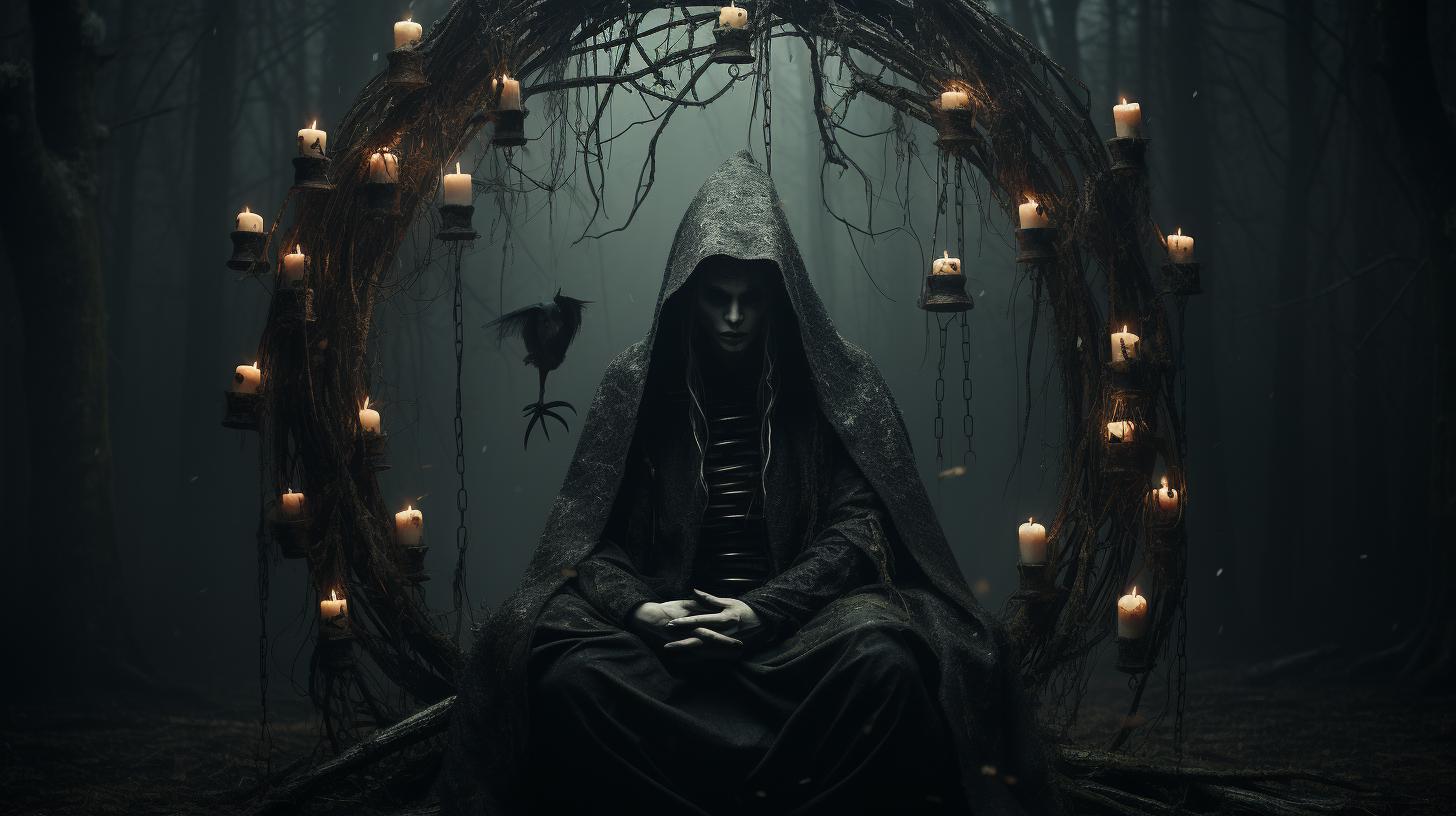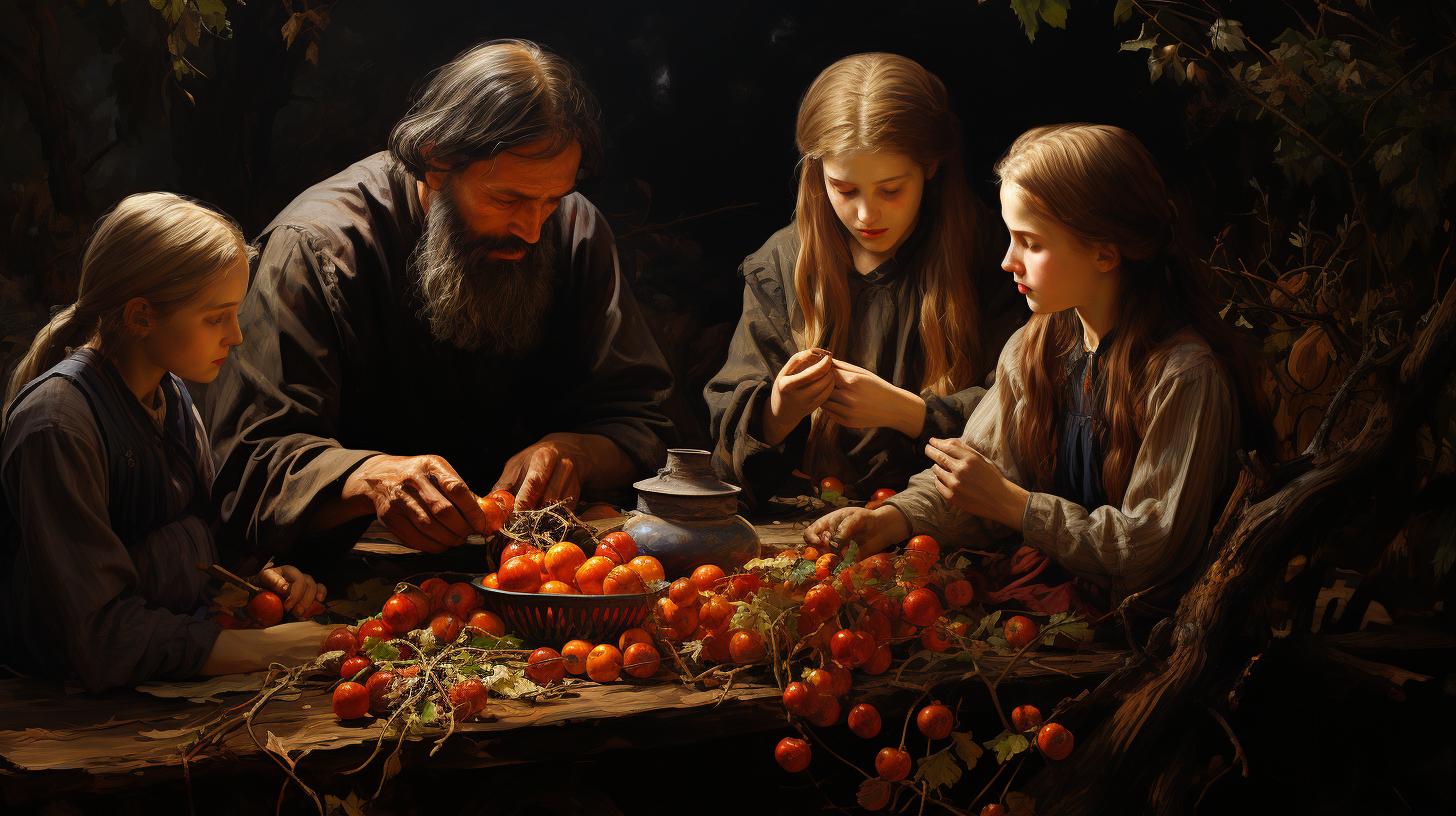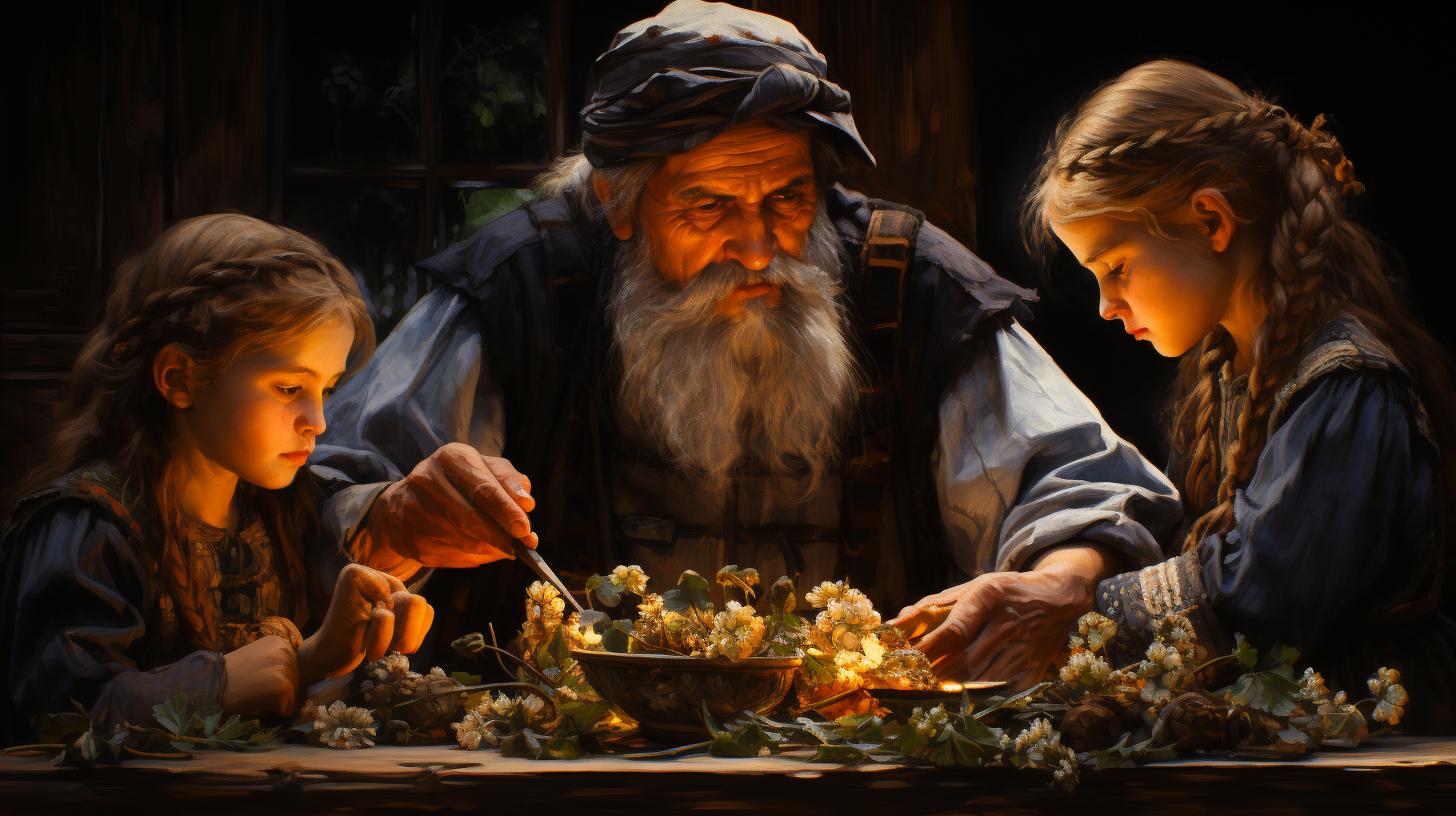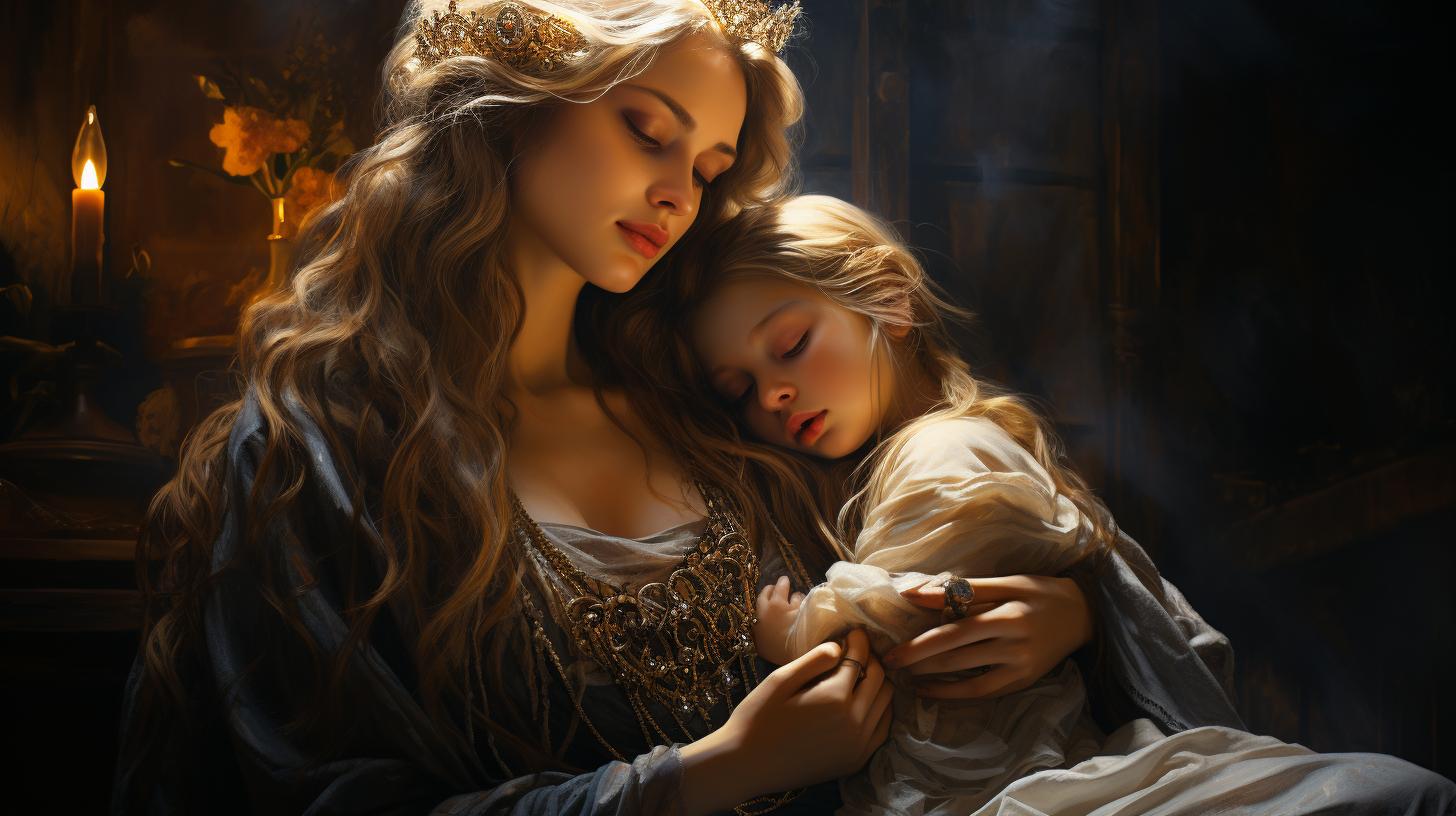Kupala Slavic Goddess: Exploring the Ancient Traditions and Rituals of Summer Solstice in Eastern Europe
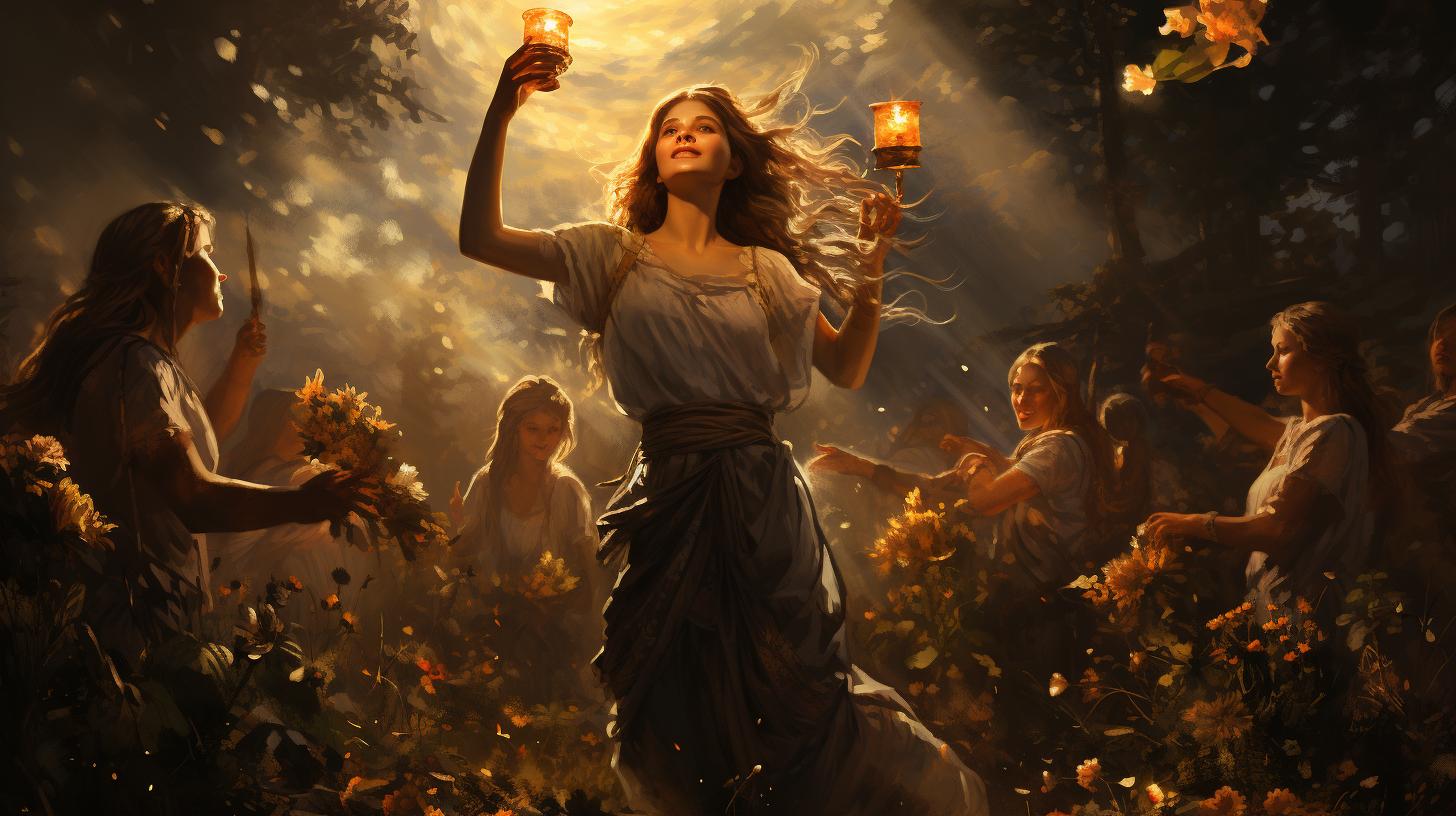
The ancient traditions and rituals of the Slavic goddess Kupala have long captivated the hearts and minds of Eastern Europe. As we delve into her origins and significance during the summer solstice, we uncover the associations with water, fertility, and love.
Through captivating stories and legends, we explore the tragic tale of Kupala and her connection to other deities in Slavic mythology. From the fiery rituals and divinations of Kupala Night to the search for the mythical Fern of Kupala, this article uncovers the rich folklore and modern adaptations of this revered goddess.
Stay tuned for an enlightening exploration of wisdom, healing powers, and cultural significance.
Kupala Slavic Goddess: Exploring the Ancient Traditions and Rituals
Welcome to the fascinating world of Kupala, the Slavic goddess steeped in ancient traditions and rituals. In this section, we will delve into the origins and background of Kupala, uncover the significance of the summer solstice in Slavic culture, and explore Kupala’s associations with water and fertility.
Origins and Background of Kupala
The origins of Kupala can be traced back to ancient Slavic mythology. She is revered as a powerful deity connected to the summer solstice, symbolizing purification and transformation. As we delve into Kupala’s origins, we’ll uncover the rich tapestry of folklore and beliefs surrounding this enigmatic goddess.
Significance of the Summer Solstice in Slavic Culture
The summer solstice holds immense significance in Slavic culture, representing the peak of the sun’s power and the balance between light and darkness. This section will explore the cultural and spiritual importance of the summer solstice, shedding light on the rituals and celebrations that honor this pivotal moment in the yearly cycle.
Kupala’s Associations with Water and Fertility
Kupala’s close association with water is deeply rooted in Slavic culture. Considered a goddess of purification and fertility, she is often worshiped near rivers, lakes, and springs. We’ll take a closer look at the deep symbolism behind Kupala’s affinity for water and her role in bestowing fertility and abundance upon the land and its people.
The Mythology of Kupala: Stories and Legends
The Tale of Kupala and her Tragic Love
One of the captivating stories surrounding Kupala is the tale of her tragic love. According to ancient Slavic mythology, Kupala, adorned with a crown made of ferns and wildflowers, playfully walked along the river Ra.
However, her crown accidentally fell into the water. As per Slavic customs, whoever found the crown was destined to marry Kupala. To their astonishment, it turned out to be her own brother.
Overwhelmed with shame, they chose to end their lives. To ease their sorrow, the gods transformed them into flowers.
Kupala’s Connection to Other Deities in Slavic Mythology
Kupala, the Slavic goddess of the summer solstice, has deep connections with other deities in Slavic mythology. She was the daughter of Simargl, the god of fire, and Kupalnitsa, the goddess of night.
Kupala’s association with water, fertility, and purification aligns her with her male counterpart, Kupalo, who represents peace, magical water, and herbs. Together, they symbolize the harmonious balance of the elements and the cycle of life.
These intertwined deities form a significant part of the Slavic pantheon and are revered during the summer solstice celebrations.
Influence of Kupala’s Mythology in Slavic Culture
The mythology surrounding Kupala has left a profound impact on Slavic culture, particularly during the solstice festivities. The tragic love story of Kupala serves as a poignant reminder of the impermanence of life and the transformative power of love and loss.
The symbolism of purification, fertility, and nature’s cycles embedded in Kupala’s mythology continues to inspire rituals and traditions, such as jumping over fires and releasing floral crowns into the river. These acts reflect the desire for purification, luck, and the hope of finding love during this enchanting time of the year.
Kupala’s connection to other deities further enriches the mythology and cultural significance surrounding her. The interplay of these deities reflects the interconnectedness of the natural world and human existence, emphasizing the importance of balance, fertility, and the cycles of life.
Celebrating Kupala: Rituals and Traditions
Immerse yourself in the enchanting world of Kupala rituals and traditions, where ancient customs come alive during this vibrant celebration. Kupala Night, also known as Ivan Kupala Night, is a magical evening filled with love, fire, and divination.
Kupala Night: Love, Fire, and Divination
As the sun sets on the summer solstice, communities gather to celebrate Kupala Night, embracing the fiery energy and the allure of love. Bonfires crackle and dance, casting their warm glow upon the revelers.
Couples hold hands and jump over the flames, believing that this daring act will bring them luck and strengthen their bond.
Amidst the flickering firelight, divination rituals take place, where the future can be glimpsed.
Young maidens toss wreaths adorned with candles into the river, sending forth their fervent wishes and desires. The direction in which the wreath floats is said to foreshadow their romantic prospects.
Hearts race with anticipation as they await the reveal of their fate.
The Ritual of Jumping Over the Fire
A centerpiece of Kupala Night, the ritual of jumping over the fire symbolizes purification and the letting go of negativity. Participants take a leap of faith, leaping across the flames with hopes of leaving behind their troubles and embracing a fresh start.
The crackling fire acts as a bridge between the past and future, igniting a sense of renewal and transformation.
Floral Crowns and Wishes on the River
Women weave delicate floral crowns, intricately crafting them with vibrant blossoms and fragrant herbs. These crowns, infused with beauty and intention, are offerings to the water goddess, Kupala. With lit candles atop their floral creations, the women release the crowns onto the river’s gentle current, a heartfelt act expressing their deepest desires and dreams.
The Search for the Mythical Fern of Kupala
Intrigue fills the air as participants venture into the depths of the forest, in search of the elusive Fern of Kupala. Legends speak of this enchanted plant that only blooms on the eve of Kupala Night.
Those fortunate enough to find it are bestowed with good fortune and a deeper connection with nature. This quest brings an element of mystery and adventure to the festivities, blending magic and folklore into a captivating experience.
Step into the enchantment of Kupala, where ancient rituals harmonize with the summer solstice, love finds its expression in flames, and wishes are set afloat on the sacred river. Celebrate this radiant goddess and her traditions, immersing yourself in the joyous revelry that has been carried on through generations.
Kupala in Slavic Folklore and Modern Culture
Kupala, the Slavic goddess, holds a significant place in Slavic folklore and continues to influence traditions and festivals in the region. This section will explore Kupala’s profound impact on Slavic cultural practices, her manifestations in Russian, Ukrainian, and other Slavic countries, as well as her interpretations and representations in art and literature.
Kupala’s Influence on Slavic Traditions and Festivals
Kupala’s presence can be felt in various Slavic traditions and festivals, where her myth and symbolism intertwine with the celebration of love, nature, and renewal. From the ritualistic jumping over fires during Kupala Night to the creation of floral crowns and wishes floated on rivers, these customs reflect Kupala’s enduring influence in ensuring prosperity, fertility, and protection from evil forces.
Ritual of Jumping Over the Fire
One of the most captivating rituals associated with Kupala is the act of jumping over fires during Kupala Night. This tradition symbolizes purification and the pursuit of love and happiness. By leaping over the flames, participants seek to cleanse themselves of negativity and receive Kupala’s blessings for a prosperous future.
Floral Crowns and Wishes on the River
Another cherished practice during Kupala celebrations is the creation and wearing of colorful floral crowns. These crowns, adorned with flowers and herbs, are then released onto rivers with lit candles. This act represents the visualization of hopes and dreams, as well as a wish for love and good fortune to flow into the lives of those who partake in the celebration.
The Search for the Mythical Fern of Kupala
Infused with enchantment and mystery, the search for the mythical Fern of Kupala adds an element of adventure to the festivities. Legend has it that this rare fern blooms only on the night of Kupala, and finding it brings great fortune and understanding of the language of trees.
People venture into the depths of forests, guided by the belief that the fern holds ancient wisdom and the power to fulfill their deepest desires.
Kupala in Russian, Ukrainian, and Other Slavic Countries
Kupala’s influence extends beyond national borders, leaving an indelible mark on Russian, Ukrainian, and various other Slavic countries.
While the core traditions remain similar, there are nuances and regional variations that add richness to the celebrations.
Unique Celebrations in Russia
In Russia, Kupala celebrations are often intertwined with the festivities of Ivan Kupala Day, the summer solstice celebration in honor of Saint John the Baptist. This fusion of pagan and Christian traditions creates a unique blend of rituals, music, and dances performed around bonfires in rural areas or organized events in cities.
Kupala Festivities in Ukraine
In Ukraine, Kupala is a cherished cultural event known as Ivan Kupala Day or the Feast of St. John the Baptist. Villages and towns gather at riverbanks or lakeshores to celebrate with music, dance, and games.
The highlight of the festivities is the floating of the symbolic Kupala wreaths adorned with herbs, flowers, and candles, as young people search for love and luck.
Other Slavic Countries’ Interpretations
While Kupala is primarily associated with Russian and Ukrainian culture, other Slavic countries embrace their unique interpretations of the goddess.
In Belarus, for example, Kupala Night is celebrated with bonfires, water rituals, and performances showcasing traditional folklore. Similarly, countries such as Poland, Slovenia, and Serbia also have their own variations of Kupala festivities, infusing local customs and beliefs into the celebrations.
Interpretations and Representations of Kupala in Art and Literature
Kupala’s allure has captivated artists and writers alike, inspiring numerous artistic interpretations and literary works. Throughout history, painters, sculptors, and writers have sought to capture the essence of Kupala, depicting her beauty, sensuality, and mythological significance in diverse forms.
Artistic Representations of Kupala
From traditional folk art to contemporary paintings, Kupala’s image has been immortalized in various art forms. Artists often depict her adorned with floral crowns or surrounded by mystical elements such as fire and water, representing her associations with nature and transformation.
These evocative artworks serve as visual testaments to the enduring allure of this ancient Slavic goddess.
Literary Works Inspired by Kupala
In literature, Kupala’s mystique has been a source of inspiration for poets, novelists, and playwrights. Writers weave her stories into narratives that explore themes of love, loss, and personal transformation. The richness of Slavic folklore and Kupala’s fascinating mythology provide a rich tapestry for literary exploration, bringing her character and symbolism to life through the written word.
- Mention of Kupala’s Influence in Slavic Traditions and Festivals
- Explanation of Ritual of Jumping Over the Fire
- Discussion on Floral Crowns and Wishes on the River
- Overview of the Search for the Mythical Fern of Kupala
- Highlighting Unique Celebrations in Russia
- Exploration of Kupala Festivities in Ukraine
- Introduction of Other Slavic Countries’ Interpretations
- Analysis of Artistic Representations of Kupala
- Overview of Literary Works Inspired by Kupala
Discovering the Wisdom of Kupala
As we delve into the realm of Kupala, we uncover the profound wisdom and mystical powers associated with this Slavic goddess.
From herbal knowledge to a deep connection with nature, Kupala holds the secrets of healing and transformation.
Herbal Knowledge and Healing Powers Associated with Kupala
Kupala is revered for her deep understanding of herbs and their medicinal properties. Her followers believe in the healing powers of plants, passed down through generations. With Kupala’s guidance, herbal remedies were used to treat various ailments, promote overall well-being, and restore balance.
From the soothing effects of chamomile to the cleansing properties of nettle, Kupala’s wisdom in herbalism encompasses a vast range of knowledge. She teaches us the importance of harnessing nature’s gifts for holistic healing and nurturing the body, mind, and spirit.
Unveiling the Language of Trees: Kupala’s Connection with Nature
In the realm of Kupala, the language of trees comes alive. She holds a deep connection with the natural world, particularly with the towering ancient trees that whisper ancient secrets. Kupala’s followers believe that by attuning themselves to nature, they can tap into its wisdom and receive guidance for their lives.
Each tree holds its own unique teaching, from the strength and resilience of the mighty oak to the wisdom and patience of the ancient willow. Kupala helps seekers understand the subtle language of trees, enabling them to find solace, inspiration, and a deeper connection with the natural world.
How Kupala Resonates with Love, Sensuality, and Transformation
Kupala’s essence radiates with love, sensuality, and transformation. Through her tragic love story and her association with the summer solstice, Kupala embodies the passionate energy of romance and profound transformations that occur during this time of year.
During Kupala Night, couples seek her blessings, hoping to ignite eternal love and deepen their connection. Kupala’s presence infuses the festivities with an electric atmosphere, where sensuality and desire dance under the moonlit sky.
Moreover, Kupala teaches us the power of personal transformation. Just as she and her love transformed into flowers, we are reminded that change is an inherent part of life’s journey. Kupala encourages us to embrace the fire within and step into our true potential, shedding old layers and blossoming into our authentic selves.
By embracing the wisdom of Kupala, we unlock the secrets of herbal healing, connect with the language of trees, and experience profound transformations in matters of love and self-discovery. The teachings of this Slavic goddess continue to captivate and inspire, reminding us of the eternal wisdom that lies within nature and ourselves.
Exploring African Water Goddess Names: A Comparative Analysis
African Water Goddesses and their Cultural Significance
Within African mythology, there are several prominent water goddesses that play significant roles in their respective cultures. These goddesses are revered for their connection to water, fertility, and life-giving forces. Each goddess embodies unique qualities and symbols that hold deep cultural significance.
One such goddess is Mami Wata, worshipped in various West African countries. Mami Wata is often depicted as a beautiful woman with long flowing hair and often accompanied by aquatic creatures.
She is associated with wealth, prosperity, and the powers of healing and transformation.
Another revered water goddess is Oshun, predominantly worshipped in the Yoruba culture of Nigeria. Oshun is the deity of rivers, love, beauty, fertility, and sensuality.
She is known for her enchanting beauty and her ability to bring joy, harmony, and prosperity to her worshippers.
Both Mami Wata and Oshun exemplify the importance of water in African traditions and the belief in the spiritual powers associated with these goddesses.
Water, as a life-giving element, holds great cultural significance and is deeply intertwined with concepts of spirituality, fertility, and prosperity.
Comparisons between Kupala and African Water Deities
While Kupala is a Slavic goddess, it is fascinating to compare her with African water deities, such as Mami Wata and Oshun. Despite geographical and cultural differences, these goddesses share some common themes and qualities.
- Water Symbolism: Both Kupala and the African water goddesses embody the symbolism of water. They are associated with rivers, lakes, and oceans, representing purification, fertility, and life itself.
- Fertility and Sensuality: Kupala, Mami Wata, and Oshun are all connected to the concepts of fertility and sensuality.
They are believed to possess the power to grant fertility, aid in childbirth, and bring about love and desire.
- Transformation and Healing: These goddesses are associated with transformation and healing. Kupala’s fiery aspect symbolizes purification and transformation, while Mami Wata and Oshun are known for their healing powers and ability to bring about positive change.
While there are similarities between Kupala and African water goddesses, it is important to recognize and respect the unique cultural contexts in which they are worshipped.
Exploring these comparisons allows for a deeper understanding of the diverse and multifaceted nature of water deity worship across different cultures.
Morana: The Slavic Goddess of Winter
In Slavic mythology and folklore, Morana holds a prominent role as the goddess of winter. She represents the cold, darkness, and the barrenness of the winter season. Morana is often portrayed as a malevolent deity, associated with death, decay, and the end of life.
She stands in stark contrast to Kupala, the goddess of summer and fertility, symbolizing the cyclical nature of life.
Morana’s Role in Slavic Mythology and Folklore
Morana’s role is deeply intertwined with the seasons and the belief in the eternal cycle of life and death. In mythology, she is depicted as a powerful figure who rules over the winter months, reigning over the land with her icy grasp.
It is believed that when Morana is at her strongest, winter is at its coldest and most unforgiving. Slavic communities would perform rituals and ceremonies to appease Morana and ensure her departure, heralding the arrival of spring.
The Animal Symbolism Associated with Morana
Animals play a significant role in the symbolism associated with Morana. The bear is often associated with her, representing the dormant state of hibernation during the winter months. The bear’s awakening in spring symbolizes Morana’s departure as she relinquishes her hold over the land, allowing for new life and growth to emerge.
Additionally, the owl is closely associated with Morana, symbolizing wisdom and the foresight needed to endure the harsh conditions of winter.
Morana’s presence in Slavic mythology and folklore serves as a reminder of the cyclical nature of life and the inevitable transition between seasons.
Her association with winter highlights the stark contrast between the cold, dark months and the vibrant, fertile period of summer represented by Kupala. Understanding Morana’s role provides insight into the cultural significance placed on the changing seasons and the delicate balance between life and death.
The Slavic Goddesses of Fertility: Kupala and Beyond
The Slavic culture has a rich tradition of fertility worship, and Kupala stands as one of the prominent goddesses in this aspect. As the goddess of the summer solstice, Kupala embodies the essence of abundance, growth, and the continuation of life.
Her association with water and fertility symbolizes the nurturing and life-giving qualities that are essential for the prosperity of the land and its people.
Fertility Worship in Slavic Culture
Fertility worship held a significant place in Slavic culture, acknowledging the importance of fertility in ensuring the sustenance of the community. Through rituals and celebrations, the Slavic people honored the fertility goddesses, seeking their blessings for bountiful harvests, healthy livestock, and the growth of their families.
The worship of Kupala during the summer solstice was a vital part of fertility rituals, as it marked the peak of the agricultural season. Communities would come together to celebrate Kupala and seek her favor for abundant crops and fertility in both humans and animals.
The rituals included offerings, prayers, and dances to express gratitude and express hopes for fertility and prosperity in the coming year.
Exploring Other Slavic Goddesses of Fertility
In addition to Kupala, the Slavic pantheon is home to various other goddesses associated with fertility. These goddesses represent different aspects of fertility, bringing forth an intricate tapestry of beliefs and traditions.
- Mokoš: Mokoš, also known as Mat Zemlya, is the Slavic goddess of fertility, earth, and motherhood. She is revered as the embodiment of feminine strength and nurturing energy. Mokoš is often depicted as a wise and powerful figure, offering protection and fertility to those who honor her.
- Ziva: Ziva is another revered fertility goddess in Slavic mythology.
She presides over the vitality and life force present in all living beings. Ziva is believed to bring growth, abundance, and joy to her followers, serving as a symbol of life’s vibrancy.
- Rozhanitsy: The Rozhanitsy are a group of goddesses associated with birth, fertility, and protection of infants.
They are said to guide women through childbirth, ensuring the safe arrival of new life. The Rozhanitsy are often depicted as a trio, symbolizing the stages of a woman’s life: youth, motherhood, and old age.
Each of these Slavic fertility goddesses brings her unique attributes and influences, reflecting the diverse perspectives within the culture when it comes to fertility and nurturing.
As we delve deeper into the realm of Slavic mythology, we discover the profound reverence and acknowledgement of the crucial role that fertility plays in the continuity of life. Whether through the worship of Kupala during the summer solstice or the veneration of other fertility goddesses, the Slavic culture embraces the beauty and power of fertility, honoring these divine beings as the catalysts for growth and abundance.
.














